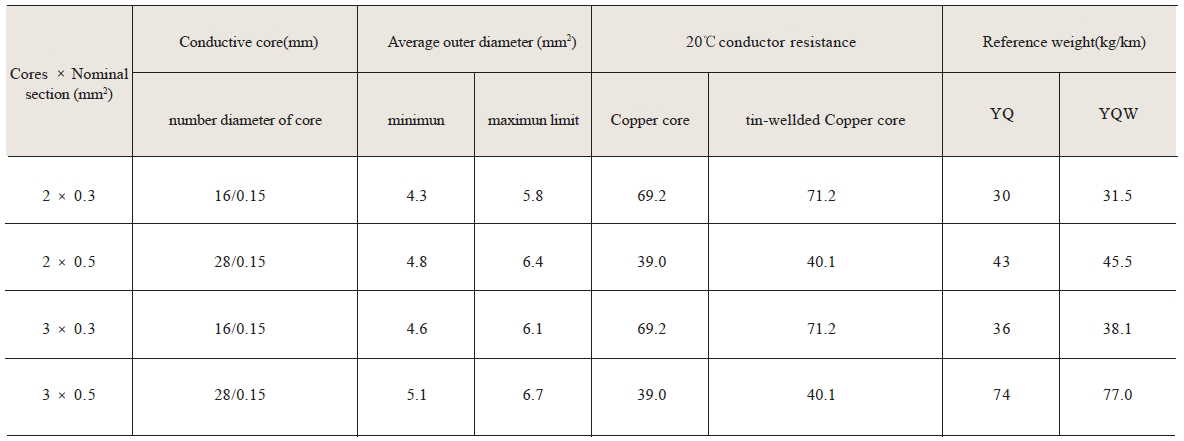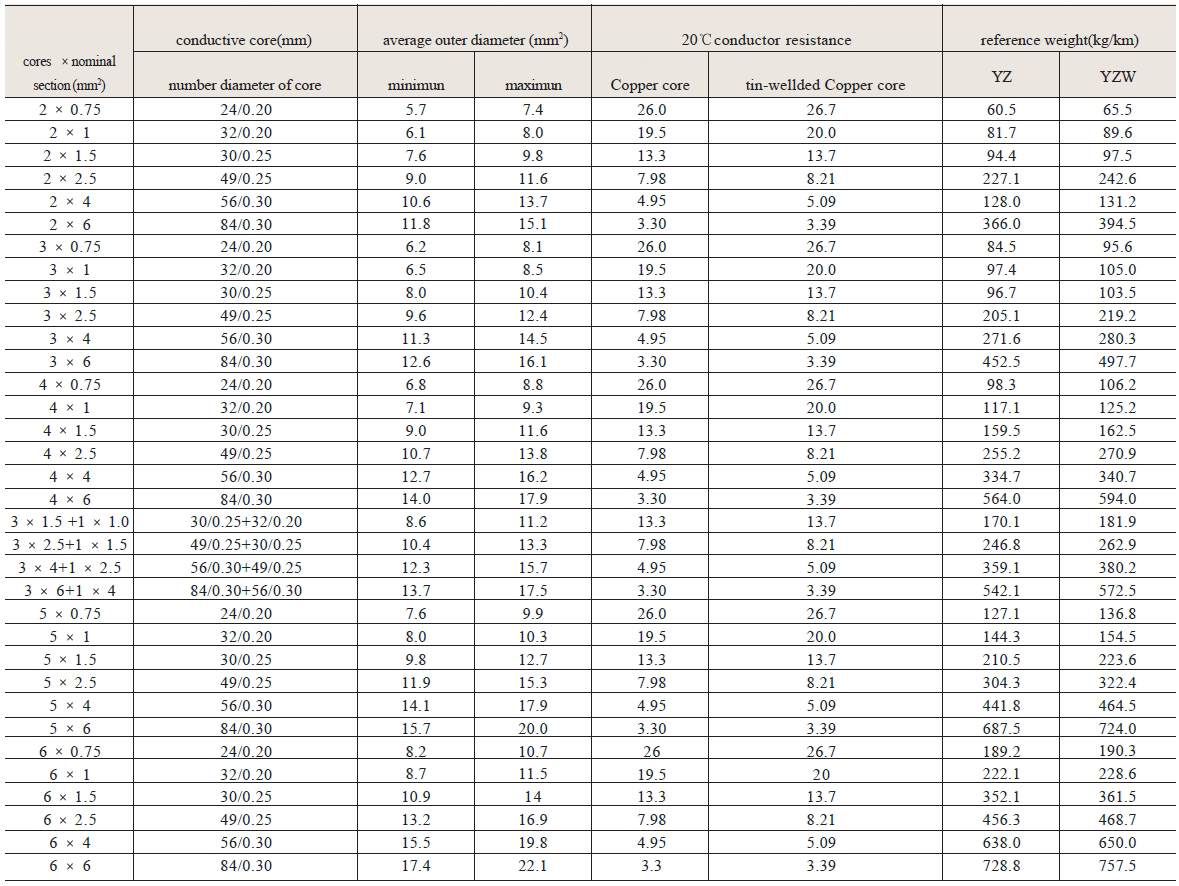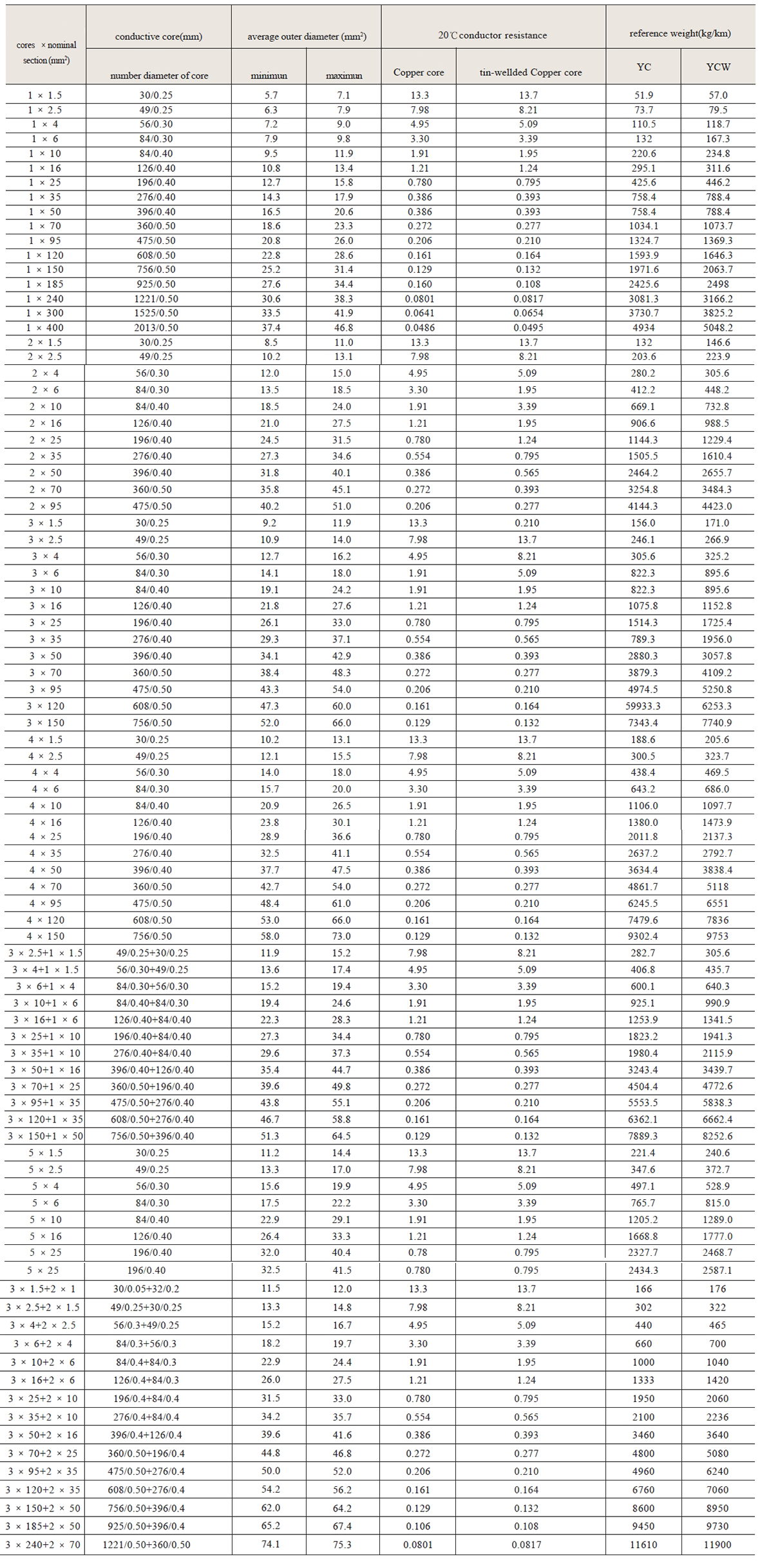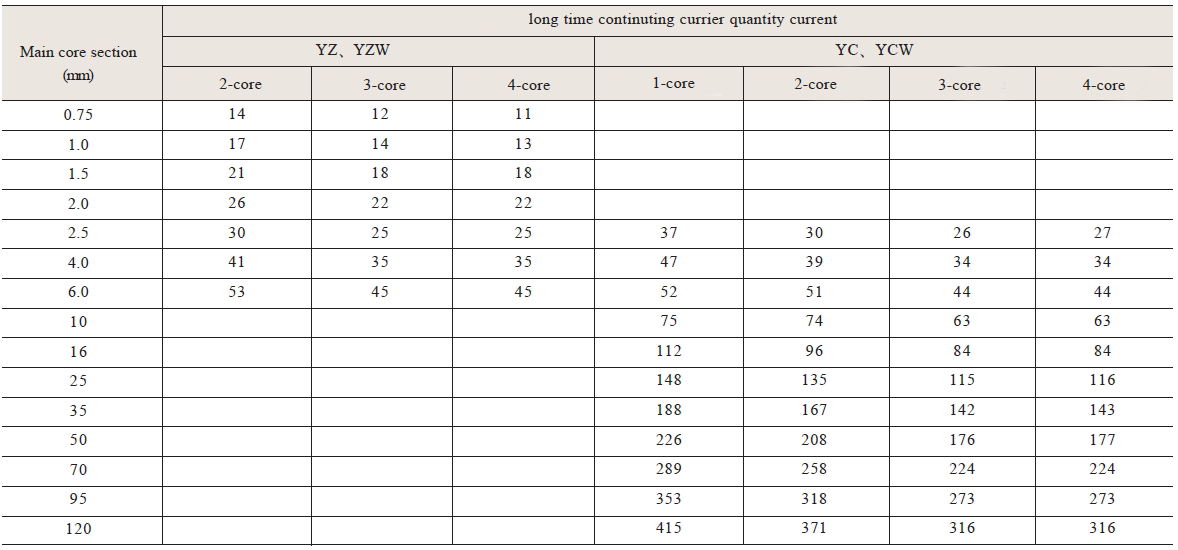| Brand | Wone |
| Model NO. | Rubber sheath flexible calbe for communication 300V/750V |
| Rated voltage | 17kV |
| Rated insulation voltage | 16 |
| type | Distribution |
| Series | YQ&YZ&YC |
Executive standard
GB/T5013-2008 JB8735-1998 Q/YL10-2008
usage
This product is suitabel for rated ac voltage 450/750V or below domestic appliaces, power-operated tools and various portable electric equipments.
Exploitation conditions
a.Rated voltage Uo / U:
YQ, YQW type 300/300V,
YZ, 60245IEC 53 (YZ)-type 300/500V
YZW, 60245IEC 57 (YZW) type 300/500V
YC, YCW, 60245IEC 66 (YCW) type 450/750V
b.Long time allow working temperature of wire core is not more than 65 .
c.W model cable has the property of durability and suitable for cutdoor touching of greasy dirt.
model name and usage

Size,weight and technological date
300/300V YQ,YQW light model

300/500V 60245IEC53(YZ),YZ;60245IEC 57(YZW),YZW
450/750V 60245IEC 66(YCW),YCW;YC
Current-carrying energy
General purpose rubber sheathed flexible cable carrying capacity
Exchange coefficient of rate of different surrounding temperature
Q: What is the difference between YQ, YZ and YC cables?
A: YQ cable is a light rubber sheath flexible cable, it is relatively light, suitable for light mobile electrical equipment; YZ cable is a medium-sized rubber sheath flexible cable, its performance between YQ and YC, can withstand a certain external mechanical force; YC cable is a heavy rubber sheath flexible cable, its rubber layer is thicker, can withstand greater mechanical external force, more suitable for use in harsh environments.
Q: What are their respective application scenarios?
A: YQ cables are often used for low-power, high-flexibility equipment, such as small desk lamps and other small mobile electrical power lines. YZ cable is suitable for connecting cables of some power tools with moderate power, such as electric drills. YC cable is mainly used in large, need to move frequently and the working environment is harsh equipment, such as high-power power tools on construction sites, mining machinery and other power supply connection cables.
Q: How do you distinguish between these three types of cables?
A: It can be distinguished from the appearance, thickness and identification of the cable. In general, YC cable is the thickest, YZ is second, and YQ is the thinnest. And there is usually a clear sign on the cable indicating its model number.






